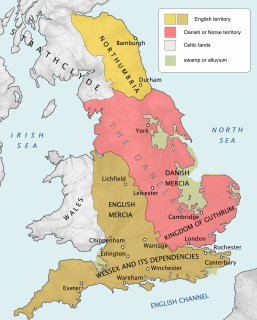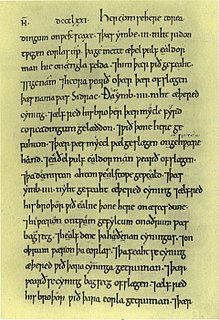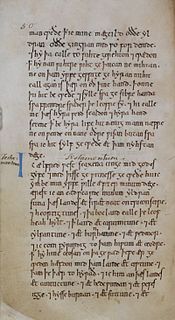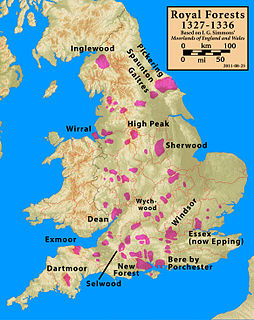
Alfred the Great was King of Wessex from 871 to c. 886 and King of the Anglo-Saxons from c. 886 to 899. He was the youngest son of King Æthelwulf of Wessex. His father died when he was young and three of Alfred's brothers, Æthelbald, Æthelberht and Æthelred, reigned in turn.

Wessex was an Anglo-Saxon kingdom in the south of Great Britain, from 519 until England was unified by Æthelstan in 927.

Year 871 (DCCCLXXI) was a common year starting on Monday of the Julian calendar.

Æthelred I was King of Wessex from 865 to 871. He was the fourth son of King Æthelwulf of Wessex. He succeeded his brother, Æthelberht (Ethelbert), as King of Wessex and Kent in 865.

Æthelbald, King of Wessex was the second of five sons of King Æthelwulf of Wessex. In 850, Æthelbald's elder brother Æthelstan defeated the Vikings in the first recorded sea battle in English history, but he is not recorded afterwards and probably died in the early 850s. The next year Æthelwulf and Æthelbald inflicted another defeat on the Vikings at the Battle of Aclea. In 855 Æthelwulf went on pilgrimage to Rome and appointed Æthelbald king of Wessex, while Æthelberht, the next oldest son, became King of Kent, which had been conquered by Wessex thirty years earlier.

Æthelberht was the King of Wessex from 860 until his death in 865. He was the third son of King Æthelwulf by his first wife, Osburh. Æthelberht was first recorded as a witness to a charter in 854. The following year Æthelwulf went on pilgrimage to Rome and appointed his oldest surviving son, Æthelbald, as king of Wessex while Æthelberht became king of the recently conquered territory of Kent. Æthelberht may have surrendered his position to his father when he returned from pilgrimage, but resumed the south-eastern kingship when his father died in 858.

The Danelaw, as recorded in the Anglo-Saxon Chronicle, is a historical name given to the part of England in which the laws of the Danes held sway and dominated those of the Anglo-Saxons. Danelaw contrasts with West Saxon law and Mercian law. The term is first recorded in the early 11th century as Dena lage. Modern historians have extended the term to a geographical designation. The areas that constituted the Danelaw lie in northern and eastern England.

At the Battle of Edington, an army of the Anglo-Saxon kingdom of Wessex under Alfred the Great defeated the Great Heathen Army led by Guthrum on a date between 6 and 12 May AD 878, resulting in the Treaty of Wedmore later the same year. Primary sources locate the battle at "Ethandun" or "Ethandune", and until a scholarly consensus linked its location with the present-day Edington in Wiltshire it was known as the Battle of Ethandun, a name which continues to be used.
Æthelred, Lord of the Mercians became ruler of English Mercia shortly after the death of its last king, Ceolwulf II in 879. His rule was confined to the western half, as eastern Mercia was then part of the Viking-ruled Danelaw. Æthelred's ancestry is unknown. He was probably the leader of an unsuccessful Mercian invasion of Wales in 881, and soon afterwards he acknowledged the lordship of King Alfred the Great of Wessex. The alliance was cemented by the marriage of Æthelred to Alfred's daughter Æthelflæd.

Ealhswith or Ealswitha was the wife of King Alfred the Great. Her father was a Mercian nobleman, Æthelred Mucel, Ealdorman of the Gaini, which is thought to be an old Mercian tribal group. Her mother was Eadburh, a member of the Mercian royal family, and according to the historian Cyril Hart she was a descendant of King Coenwulf of Mercia. She is commemorated as a saint in the Christian East and the West on 20 July.

Æthelwold or Æthelwald was the younger of two known sons of Æthelred I, King of Wessex from 865 to 871. Æthelwold and his brother Æthelhelm were still infants when their father the king died while fighting a Danish Viking invasion. The throne passed to the king's younger brother Alfred the Great, who carried on the war against the Vikings and won a crucial victory at the Battle of Edington in 878.

The Battle of Englefield was a West Saxon victory against a Danish Viking army on about 31 December 870 at Englefield, near Reading in Berkshire. It was the first of a series of battles that took place following an invasion of Wessex by the Danish army in December 870.

Æthelhelm or Æþelhelm was the elder of two known sons of Æthelred I, King of Wessex from 865 to 871.
The Battle of Reading was a victory for a Danish Viking army over a West Saxon force on about 4 January 871 at Reading in Berkshire. The Vikings were led by Bagsecg and Halfdan Ragnarsson and the West Saxons by King Æthelred and his brother, the future King Alfred the Great. It was the second of a series of battles that took place following an invasion of Wessex by the Danish army in December 870.
The Battle of Ashdown, was a West Saxon victory over a Danish Viking army on about 8 January 871. The location of Ashdown is not known, but may be Kingstanding Hill in Berkshire. The West Saxons were led by King Æthelred and his younger brother, the future King Alfred the Great, while the Viking commanders were Bagsecg and Halfdan. The battle is described in the Anglo-Saxon Chronicle and Asser's Life of King Alfred.

The ancient Selwood Forest ran approximately between Gillingham in Dorset and Chippenham in Wiltshire. It is described by the historian Barbara Yorke as a "formidable natural obstacle" in the Anglo-Saxon period, which was a significant boundary between east and west Wessex. It may earlier have been a negotiated frontier between Wessex and the British kingdom of Dumnonia which was important in the later development of the West Saxon shires, and later boundaries between Wiltshire and Somerset and north Dorset run through the forest. The boundaries through the forest and Bokerley Dyke which separated Somerset and Dorset from eastern counties may date to the fifth or sixth centuries. Selwood's importance as a boundary was also recognised in 705 when the bishopric of Sherborne was established for those "west of Selwood".

Edward the Elder was King of the Anglo-Saxons from 899 until his death. He was the elder son of Alfred the Great and his wife Ealhswith. When Edward succeeded to the throne, he had to defeat a challenge from his cousin Æthelwold, who had a strong claim to the throne as the son of Alfred's elder brother and predecessor, Æthelred.
Events from the 9th century in England.
The Battle of Basing was a victory of a Danish Viking army over the West Saxons at the royal estate of Basing in Hampshire on about 22 January 871.
The Battle of Buttington was fought in 893 between a Viking army and an alliance of Anglo-Saxons and Welsh.












